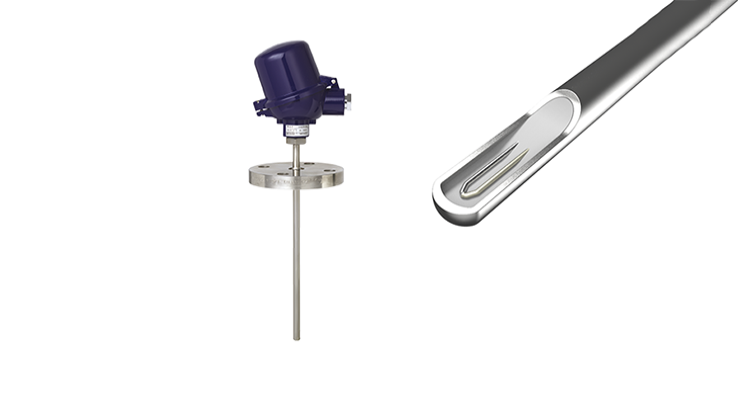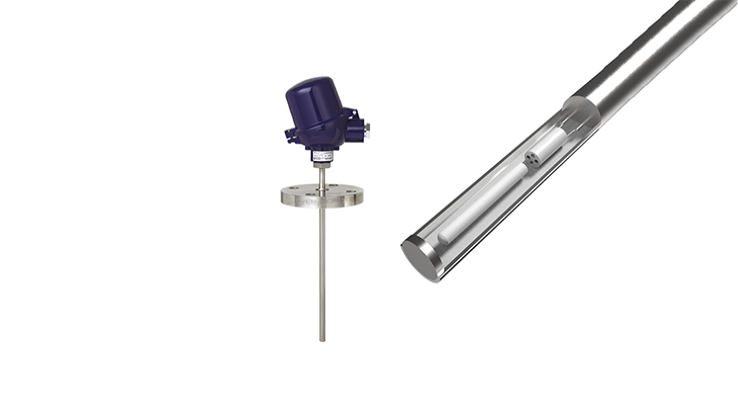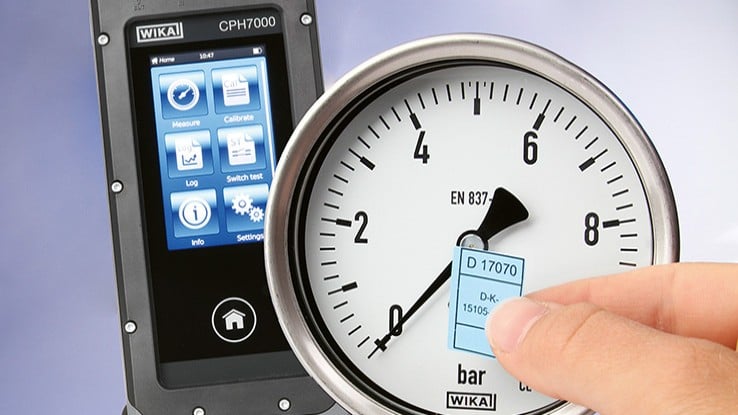Temperature sensors by WIKA
For many years, WIKA has been among the leading manufacturers of high-quality industrial temperature gauges. Use temperature measuring instruments from WIKA for the temperature measurement and temperature monitoring of your applications. Our experience and know-how in the manufacture of temperature probes sets us apart. With WIKA, temperature probes in industrial temperature measurement are essentially divided between the following groups:

What is a temperature probe and how does it work?
In the context of electrical thermometers, the term temperature probe describes a unit made up of one or more temperature sensors and a usage-specific armour, which can consist of a
- connection head
- neck tube
- thermowell / protection tube or
- a handle,
for example.
The sensor built into the temperature probe performs the actual temperature measurement and converts the temperature to be measured into an electrical signal. Temperature probes are used for both temperature measurement as well as temperature monitoring.
For what purposes are temperature probes with thermocouples suitable?
Temperature probes with thermocouples are ideal for measuring high temperatures of up to +1,700 °C. They consist of two different metals which are joined together to form a thermocouple. The connection point (hot junction) represents the actual measuring location of the temperature sensor; the wire ends are referred to as cold junction. When there is a temperature change at the measuring location, a voltage is generated between the hot and cold junctions due to the different electron densities of the metals and the temperature difference. This is approximately proportional to the temperature of the measuring location of the temperature probe (Seebeck effect).
The low diameter of the enables a faster response time than with a resistance thermometer, provided that the probe is installed directly in the process, that is without a thermowell / protection tube.
How does a temperature sensor of a Pt100/Pt1000 resistance thermometer work?
The temperature is measured using a temperature sensor as follows:
1. Resistance measurement using electrical resistance
2. Resistance increases or decreases with changing temperature
3. Measurement of the resistance determines the exact temperature
A Pt100/Pt1000 resistance thermometer has its strengths in the low and medium temperature range of -196 … +600 °C. In industry, mainly temperature sensors with Pt100 or Pt1000 measuring resistors are used. If the temperature sensor detects an increase in temperature, its resistance increases as well (positive temperature coefficient). The resistance of a Pt100 resistance thermometer at 0 °C is 100 ohms, for a Pt1000 resistance thermometer it is 1,000 ohms. Further information on this can be found in our video “How does a resistance thermometer work? | Resistance thermometers per IEC 60751”.
What designs of temperature probes are there?
The temperature of use can be considered as a selection criterion between thermocouples or resistance thermometers (RTD, resistance temperature detector). Thermocouples are also suitable for a variety of applications because of their robustness. Resistance thermometers stand out due to their high basic accuracy at low (-196 °C) to medium (+600 °C) temperatures for industrial applications in this temperature range of the medium. The application range of thermocouples is generally from +400 °C up to 1,700 °C. As always, exceptions prove the rule.
Electrical thermometers are grouped into different categories. This means that they are not only differentiated based on certain industry sectors, such as chemical industry, petrochemical industry, sanitary applications (for example in the food and pharma industries) or machine building. There are also different designs, such as cable probes, compact and miniature probes, thermometers with connection head, high-temperature thermocouples with ceramic thermowell / protection tube and many more designs.

Here is an example of a design that is named after its process connection: surface probes
Surface probes are suited for the non-invasive measurement of temperature on the surfaces of containers or pipes. They are designed as resistance thermometers (TR50) or thermocouples (TC50). Both variants are also available with explosion protection.
Surface thermometers feature problem-free (even retrofit) installation without thermowells / protection tubes. Usually, the process does not have to be stopped or much less opened to mount these designs. The mounting to containers is achieved using a welded-on or screwed-on contact block which contains the temperature probe. For fixing to pipelines, a variant with tightening strap is suitable. Centrally bored washers and metallic weld-pads are available as further process connections. For specific ambient conditions, the connection leads of the surface thermometers can be delivered with special insulation materials. The cable end is available ready for connection or with fitted plug (optional) or with a field case.

How are accuracy classes calculated?
"Per DIN EN 60751 Point 5.1.3 Table 3, in °C:
- Class AA ± (0.1+0.0017 * t)
- Class A ± (0.15+0.002 * t)
- Class B ± (0.3+0.005 * t)
- Class C ± (0.6+0.01 * t)"





